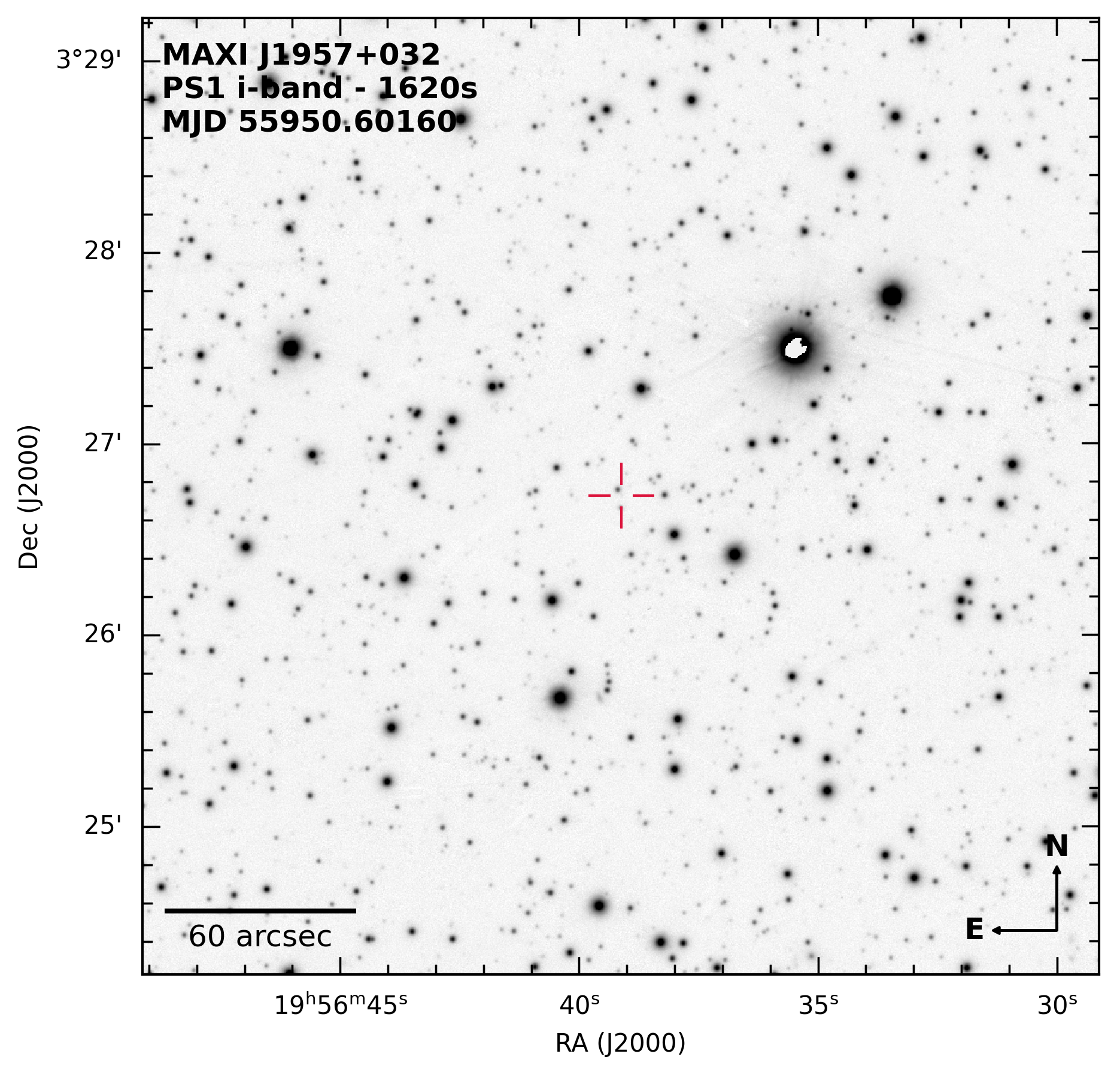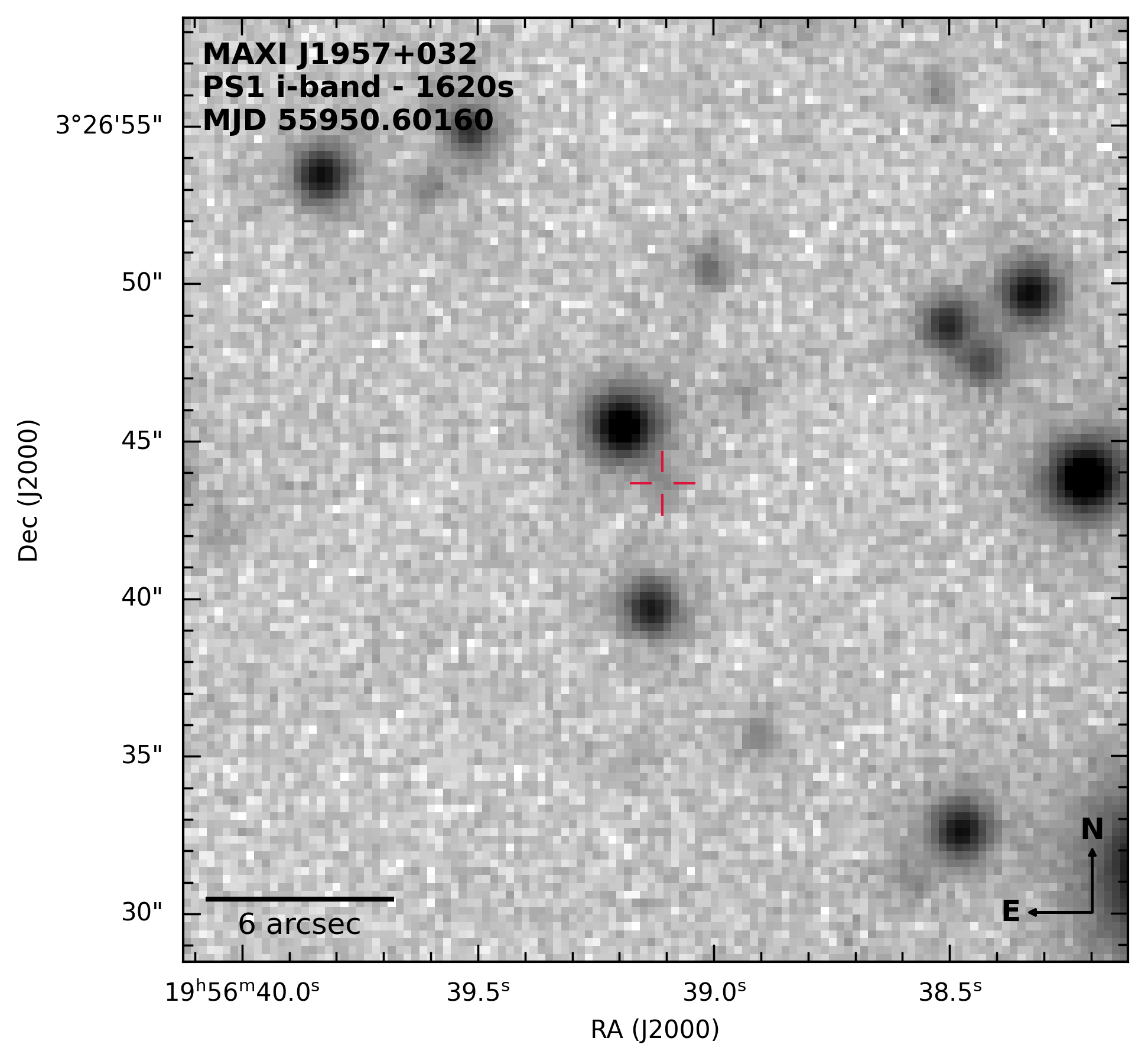« Previous object
Next object »
ID# 19
MAXI J1957+032
IGR J19566+0326
RA Dec
|
ℓ b
|
Year of discovery: 2015
(Negoro2015bCherepashchuk2015)
| Location in Globular Cluster | ||
|---|---|---|
| Type of accretor |
NS AMXP (313.64 Hz / 3.18 ms) |
Transient Sanna2022 |
|
Distance [kpc] (other distances) |
5
±2 |
MataSanchez2017aRavi2017 |
| z [kpc] | -1.11 | MataSanchez2017aRavi2017 |
| Orbital period (Porb) [min] | 60.8841±0.0010 | Sanna2022 |
| Porb determination method | X-ray pulsation | |
| Thermonuclear X-ray burst | ||
| Peak X-ray flux [erg s-1 cm-2] (2 - 10 keV) |
4.91E-10 | MataSanchez2017a |
| NH [x1022 cm-2] | 0.17 | MataSanchez2017a |
| E(B-V) [mag] | ||
| Magnitude | R=18.27±0.06 qR=21.4±0.2 |
Guver2015 MataSanchez2017a |
| Proposed companion |
| An optical counterpart (late-K/early-M dwarf star) has been identified during the X-ray quiescence phase, setting a constraint on the source distance (Ravi2017). However, the outburst properties lead the author to suggest that the observed counterpart is likely not the mass donor. Instead, it is suggested to be a possible triple system, with the main-sequence counterpart likely being in a wide orbit around a compact interacting binary. |
| UV | ||
|---|---|---|
| Optical | Featureless | MataSanchez2017a |
| X-ray | Featureless | MataSanchez2017aSanna2022 |
|
|||
|---|---|---|---|
| qR=21.4±0.2, B=18.5±0.3, U=18.7±0.3, UVW1=18.5±0.3(Vega), UVM2=18.3±0.2(Vega), UVW2=18.1±0.2(Vega), r'=18.5±0.15, R=18.27±0.06, g'=18.98±0.05, i'=18.59±0.06 | |||
Aladin finding chart
Scroll to zoom. Set survey image in "Manage layers"
Default image: DSS2 Red
MAXI J1957+032 in Simbad
Pan-STARRS1 finding chart
Click to enlarge in new tab/window


References to finding charts
This research has made use of NASA's Astrophysics Data System (ADS) and the SIMBAD database operated at CDS (Strasbourg, France)
Please acknowledge the use of this catalogue in any published work you derive from it.
Last modified: 09 May 2023.

